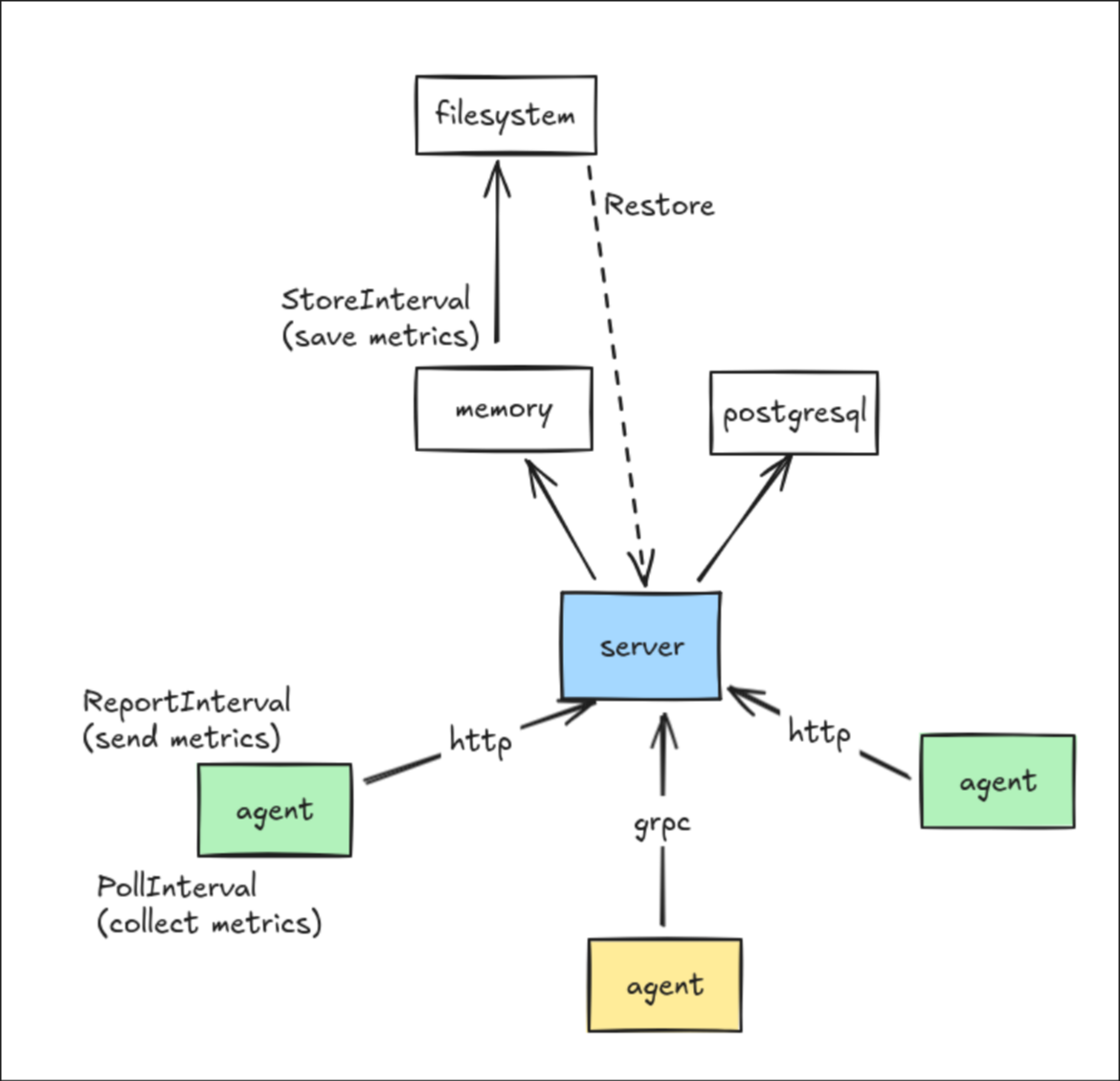My pet project to learn Golang with Yandex Practicum Advanced Go Developer course.
go-metrics is a robust, scalable metrics collection system designed for distributed environments. It consists of two main components: an agent that collects and sends metrics in batches, and a server that receives, processes, and exposes these metrics through a RESTful API.
- Efficient Metric Collection: Agents collect system and application metrics with minimal overhead.
- Batch Processing: Metrics are sent in batches to optimize network usage and server processing.
- Scalable Architecture: Designed to handle multiple agents sending data to a centralized server.
- RESTful API: Server exposes collected metrics through a REST API.
- Lightweight process that runs on target systems
- Collects various system metrics (CPU, memory, disk usage, network stats, etc.)
- Aggregates metrics and sends them in configurable batches (with assymetric encryption support)
- Implements retry logic
- Centralized metrics receiver and processor
- Efficiently handles incoming batch metrics from multiple agents
- Can store metrics in memory (with filesystem synchronization) or in PostgreSQL
- Provides a RESTful API for querying and analyzing metrics
- GET / - list all metrics as an HTML page
- POST /update { "id": "cpu", "type": "gauge", "value": 23.46 } - update one metric
- POST /updates - update the batch of metrics
- POST /value { "id": "cpu", "type": "gauge" } - get one metric
- POST /update/gauge/cpu/23.46 - update one metric
- GET /value/gauge/cpu - read metric value
- GET /ping - check database status (if started in DB mode)
TBD
Add git remote:
git remote add -m main template https://github.com/Yandex-Practicum/go-musthave-metrics-tpl.git
Update autotests:
git fetch template && git checkout template/main .github
- Branch name should follow pattern
iter<number>, where<number>— number of increment. E.g., branchiter4will trigger autotests for increments 1-4.
